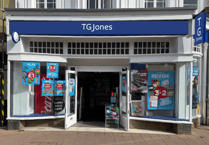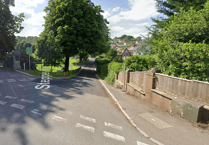Few can say that living in a castle is something you just get used to, but for the Gilberts, they have 700 years of experience under their hats.
Geoffery Gilbert, one of four sons and a daughter of Commander Walter Raleigh Gilbert and his wife, Joan, grew up at the castle when it came into the possession of his parents in 1930. The manor had been allowed to fall into disrepair when former Gilberts sold the property in 1800.
Commander Gilbert was adamant that the home should return to the family and worked to fulfil the ambition, restoring the house room by room with authentic materials and attention to traditional workmanship.
A main point is the Great Hall, that had fallen into ruin two centuries before the restoration work in 1954. Ample evidence of the former structure remained. Though the roof had long disappeared, the pitch and the curve of the braces were visible on the two end walls and the reconstruction was faithful to drawings made from studies.
Though the architecture is of great interest to visitors, it must be the personal history of the house that fascinates most.
From the numerous entries in the history books, no one could say that the Gilberts were shy, retiring wallflowers.
Indeed, the first Gilbert at the castle was an MP for Totnes and caused ripples throughout the county and beyond.
But the best known inhabitants are sure to be the prestigious sea dogs who realised Elizabeth I's dreams of defence and colonial expansion.
Sir John Gilbert who succeeded to Compton in 1547, is famed for the considerable part he took in defending the country against the force of the Spanish armada.
Sir Humphrey Gilbert has found himself in the history books as the first success of English expansion in 1578, with the colonisation of Newfoundland, he is even depicted, along with Compton Castle, on a set of commemorative Canadian stamps to mark the 350th anniversary. The influential face is sought after closer to home - Geoffery Gilbert has recently been contacted by the National Portrait Gallery for the loan of the only known authentic portrait of the famous ancestor, the request was politely declined.
'They asked to borrow the portrait of Humphrey, but it is the only one and when you lend things they tend to get damaged. So I was told that the Queen is lending pictures, well she has got thousands of them.
'I offered them a large colour copy, but they weren't very keen on the idea!'
Sir Humphrey Gilbert's vessel The Squirrel encountered heavy weather on the return voyage that claimed his life. His work was continued by his brother Adrian and associates including Sir Francis Drake and the Gilberts' half brother Walter Raleigh.
The famous family connection has to be the envy of English traditionalists, but one that Geoffery is eager to avoid confusion about.
An article in the Sunday Times rooted the modern day Gilberts in the Raleigh bloodline, an impossible branch of the family tree that had unavoidable consequences when Raleigh descendants caught wind of the claim – believing Geoffery to be an imposter!
But the cross-family connection has been kept alive with names Walter, Humprey, Raleigh and John featuring through the ages.
Geoffery's son, Walter Raleigh Gilbert was asked to open the play ship on Totnes Quay, if only to say Walter Raleigh was here.
Explaining a family tree that spans 700 years , it is quite an understatement when Geoffery says 'We are quite an old family!' Becoming established is one thing, but the ambition to spread the name globally is quite another. With the prestige of figures past, some Gilberts get sidetracked from the limelight.
Raleigh Gilbert, son of Sir Humphrey was a key figure in American colonisation under James I. Part of the Plymouth Colony, Raleigh Gilbert established a colony at what is now the State of Maine. Having remained for two years, Raleigh Gilbert returned to Compton upon the news of his succession to the property.
The vessel Virginia in which Raleigh returned to England was commemorated in 1957 in postage stamps as part of the 350th anniversary of the founding of the colony and a mark of his global efforts can be found in the family chapel at the castle - The Maine Society Daughters of the American Colonists presented a mahogany plaque to the family commemorating the ancestor.




